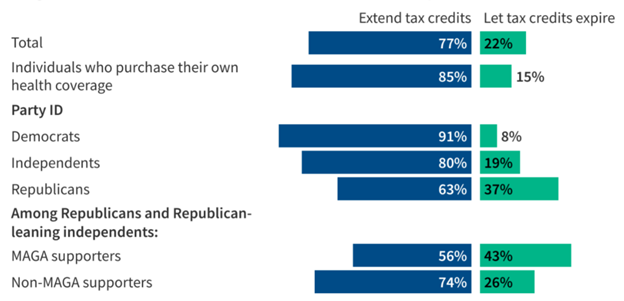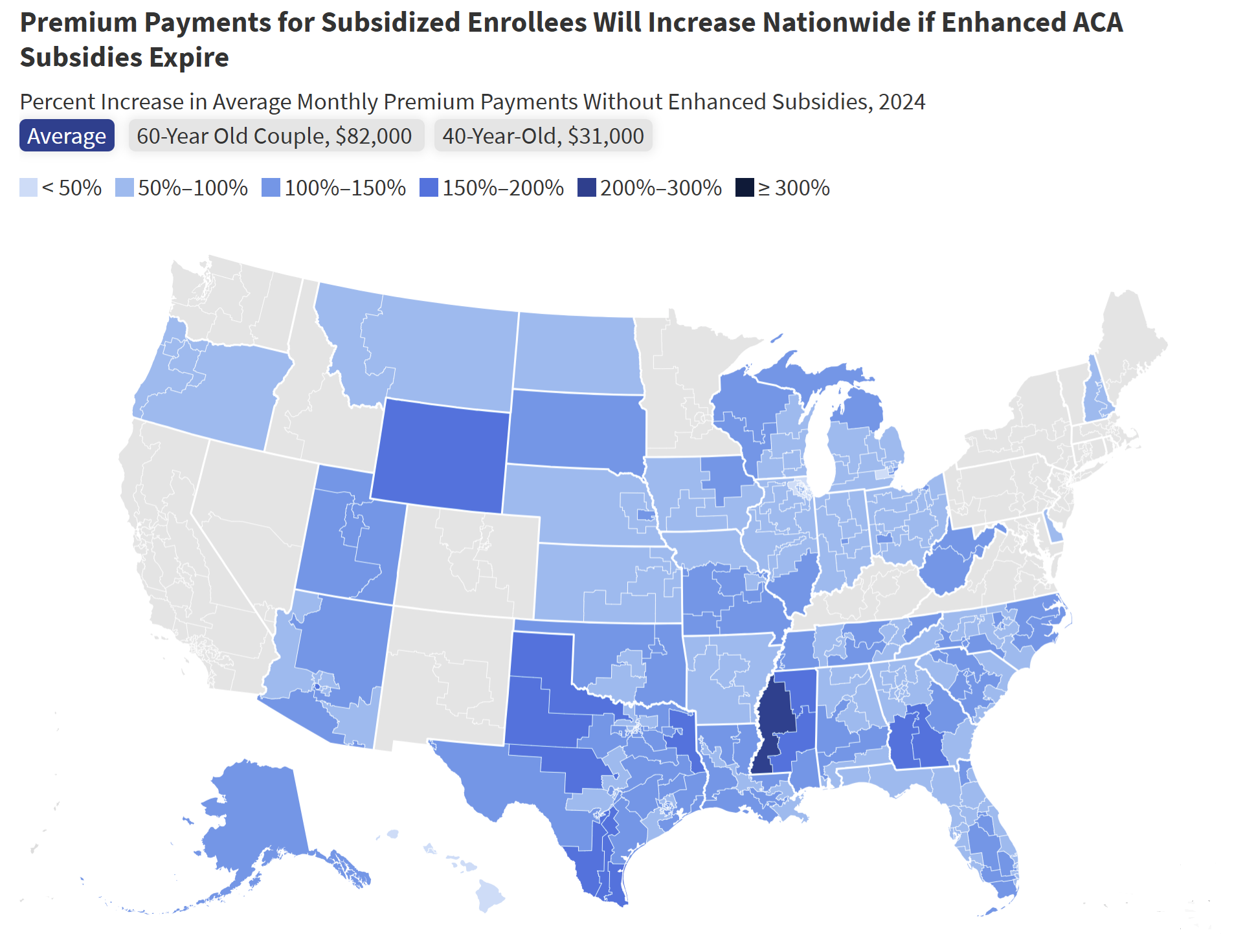Over the last week, the decision on whether to extend the enhanced ACA subsidies has increasingly become the defining issue of the shutdown. It is an issue that is fracturing the Republican Party and threatening to derail their midterm election prospects.
Unpacking the numbers-
From the outset, the Affordable Care Act subsidized the purchase of health insurance by some lower-income Americans on the health insurance exchanges. The subsidy was based on a sliding scale that set a maximum a person would pay as a percentage of their income. The ceiling for the subsidy originally was 400% of the federal poverty level (FPL). Today, that is about $60,000 for an individual, a little over $80,000 for a couple, and $124,000 for a family of four. Anyone who exceeded that ceiling got no subsidy when purchasing their insurance.
For those below that ceiling, the government would pick up the cost of the insurance that was above a percentage of the person’s income. That ranged from just over 2% to almost 10%. According to CMS Marketplace data, the subsidy typically covered 75-85% of the premiums for this group. Before the expansion, nearly 9 million Americans received the subsidy, and they accounted for over three-quarters of all Marketplace enrollment. According to the Congressional Budget Office, the subsidy was costing the federal government about $50 billion annually.
During the pandemic, Congress expanded the eligibility criteria for the subsidy by eliminating the income limits. But the expansion was only temporary, scheduled to expire at the end of 2025. Since the expansion was adopted during the pandemic and was set to expire automatically, a narrative emerged that the expansion was a pandemic response that would no longer be necessary after the pandemic ended. But the truth is that the expansion had nothing to do with the pandemic. The pandemic was just a pretext to expand coverage, something Democrats had long sought to do. The automatic termination was included to reduce the projected effect on the deficit. This allowed Democrats to use the reconciliation process to avoid a Republican filibuster.
The expansion eliminated the 400% of the FPL limit. However, the benefit was capped by requiring that individuals must pay 8.5% of their income toward the premium before they could receive any subsidy. Furthermore, the premium is based on a particular level of coverage that currently costs about $10,000 per year for a single adult.
The net effect of the expanded subsidy rules is to reduce the subsidy as a person’s income increases. For most people, the subsidy goes to zero at an income of about $120,000 for an individual and about $240,000 for a couple. This opened the subsidy to millions of Americans who did not previously qualify. As a result, the number of Americans participating in the Marketplace leaped from 11 million to 21 million, and those receiving some subsidy went from about 8.8 million to 13.3 million. The average monthly subsidy went from $525 to just over $600. The expansion benefits have been costing about $40 billion per year. That amount is consistent with the CBO’s estimate late last year of the cost to extend the enhanced subsidy. An extension of the subsidy would add about 2% to the projected federal deficit.
Unpacking the politics-
The expansion was originally on a straight party vote. Not a single Republican voted for the original extension. However, it turns out Americans across the political spectrum came to strongly support the expansion of the subsidies.
A poll by the KFF (fka the Kaiser Family Foundation) found that 77% of Americans want Congress to extend the subsidies. The extension enjoys remarkable support across the political spectrum. Even self-identified MAGA Republicans favor the extension 56-43.

Earlier this year, KFF conducted a detailed analysis of the effect of the expiring subsidies by Congressional district. Those most impacted are skewed toward districts currently held by Republicans. In all but one district held by a Republican, voters over 60 who are currently receiving the subsidy would see an increase in their premium of over 100%. These individuals make up 7% of the population of those districts. Since those individuals are over 60, most are likely registered voters and would typically be more likely to vote Republican.
This is an interactive map that KFF prepared. This image shows the average premium increase, but you can click on it to get more detailed information. There is a remarkable overlap between the states facing the largest increases and the states President Trump won in the 2024 election.

We are currently entering the ACA reenrollment period, and many Americans are learning for the first time how much their premiums may go up. As a result, Republican members of Congress are hearing from their constituents. It is, therefore, not surprising that a growing number of Republican members are breaking with the leadership on extending the subsidies. Most notable has been MAGA loyalist Marjorie Taylor Greene.
A compromise on subsidies may be the off-ramp to end the shutdown. President Trump has hinted that he might be open to a deal on healthcare. If the Senate were to pass a bill to end the shutdown that included an extension of the subsidies, it is hard to imagine the House would not do the same.





